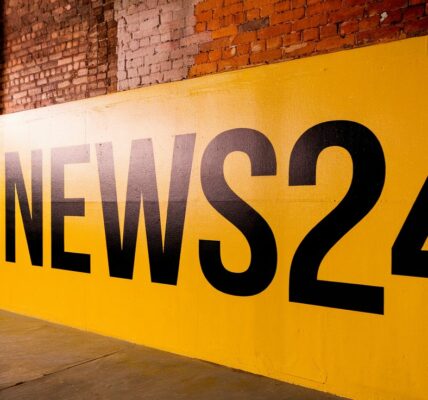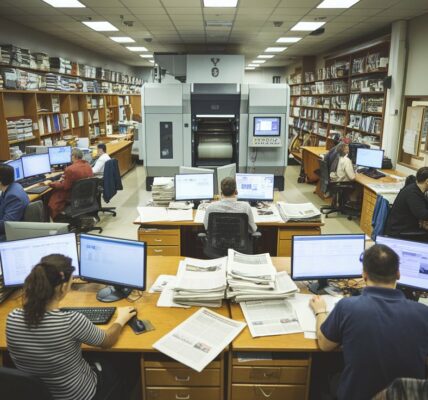Tensions Escalate in the Irish UNIFIL Zone: Recent Clashes Explained
The Irish-controlled area within the UNIFIL (United Nations Interim Force in Lebanon) zone in southern Lebanon has become the center of international attention following the recent escalation of hostilities between Israel and Hezbollah. Over the past week, the situation has grown increasingly precarious, with Israeli forces crossing into Lebanon, aiming to strike Hezbollah targets. This military operation has forced Irish peacekeepers, along with other UN personnel in the wider UNIFIL area, into protective bunkers as the conflict intensifies. At the same time, hundreds of thousands of civilians have fled their homes, seeking safety from the violence.
Irish Peacekeepers Under Threat
The Irish-led UN battalion is responsible for a critical zone along the de facto border between Lebanon and Israel, known as the “blue line.” In recent days, there has been mounting concern over the proximity of military activity to UN Post 6-52, where Irish peacekeepers are stationed. According to reports, Israeli forces have been operating dangerously close to the post, creating a highly volatile situation. An image obtained by Irish media but withheld from publication for security reasons shows the Israeli Defence Forces (IDF) deploying tanks and armored vehicles near the UN position, with at least 20 pieces of IDF equipment in sight.
This post, located near the town of Maroun El-Ras, is one of 29 UN positions along the blue line. The Irish battalion also oversees another post, 6-50, which is staffed by Polish troops. Both of these outposts have been in the midst of heightened military activity, with fighting between Hezbollah and the IDF taking place in nearby towns such as Yaroun and Maroun El-Ras.
Hezbollah’s Strategic Response
Hezbollah, the Lebanese militant group, has been engaged in direct clashes with Israeli forces since the incursion began. In a statement released by the group, Hezbollah acknowledged the presence of international troops near the conflict zones, stating that they had observed Israeli forces around UN Post 6-52 but refrained from attacking the area to avoid harming the peacekeepers. Although Hezbollah’s statement provided a momentary sense of relief for the families of the Irish troops, the ongoing violence in the area has continued to escalate.
Maroun El-Ras, where the Irish post is located, holds significant strategic value due to its elevation and proximity to key towns in southern Lebanon. Hezbollah fighters have been targeting IDF troops attempting to advance through the area. Meanwhile, UN peacekeepers stationed in the region have been forced to remain on high alert, sheltering in place to avoid the dangers posed by the ongoing conflict.
Intensifying Hostilities Along the Blue Line
The clashes between Hezbollah and the IDF have escalated dramatically over the past week, with both sides engaging in heavy fighting across the blue line. Over the weekend, Hezbollah launched a barrage of rocket attacks into northern Israel, while the IDF responded with airstrikes, artillery fire, and ground operations. These clashes have primarily centered around the towns of Yaroun and Maroun El-Ras, both of which lie close to the Irish-monitored UN posts.
Local reports and military updates describe the fighting as involving rocket fire, airstrikes, ambushes, and ground engagements. On Friday, Israeli strikes targeted the town of Bint Jbeil, midway between Camp Shamrock (the main base of the Irish battalion) and Maroun El-Ras. One of the strikes damaged a hospital, which the IDF claimed was being used by Hezbollah as a command center. However, medical personnel in the area refuted this claim, stating that neither the hospital nor the adjacent mosque had been used for military purposes.
Throughout the weekend, Hezbollah continued its assaults, including detonating improvised explosive devices (IEDs) targeting Israeli forces near the town. Fierce battles erupted in Yaroun, where Hezbollah reportedly destroyed an Israeli tank using guided missiles. In response, the IDF intensified its bombardment of the town, with sustained shelling targeting Hezbollah positions. By Sunday, drone footage circulating online showed large parts of Yaroun reduced to rubble, though the precise date of the footage could not be immediately verified.
The Impact on Civilians
The conflict has had a devastating impact on civilians living in southern Lebanon, many of whom have been caught in the crossfire. The IDF has ordered the evacuation of residents from the region, urging them to move northward beyond the Litani River. Reports indicate that more than 350,000 people have already fled the UNIFIL zone, but an estimated 150,000 civilians remain in the area. Humanitarian organizations have struggled to assist those left behind, as the fighting makes it difficult to deliver aid or evacuate more residents.
The UNIFIL mission, which is mandated to monitor the cessation of hostilities and facilitate humanitarian access, has faced significant challenges in carrying out its duties amid the conflict. Andrea Tenenti, a spokesperson for UNIFIL, confirmed that the ongoing violence has severely hindered the peacekeepers’ ability to operate effectively. Despite this, UN personnel continue to monitor the situation as best they can from their bunkers and fortified positions.
Hezbollah’s Tactics and Israeli Operations
The fighting in southern Lebanon has largely been defined by Hezbollah’s guerrilla tactics, including ambushes, IED attacks, and the use of anti-tank missiles. The Institute for the Study of War (ISW), which monitors military conflicts worldwide, has reported that Hezbollah has kept the bulk of its forces stationed deep within Lebanon, rather than deploying them in large numbers to the front lines. This strategy allows Hezbollah to maintain a degree of control over the pace and intensity of the fighting while minimizing its losses.
For its part, the IDF has stated that its operations are focused on dismantling Hezbollah’s military infrastructure in the region. Israeli forces have reportedly seized large caches of weapons, including rockets, missiles, and explosives, in the areas they have advanced into. However, the presence of Hezbollah’s sophisticated weaponry, including advanced anti-tank missiles, has made the fighting particularly fierce.
Irish Defence Forces Response and Future Risks
The Irish Defence Forces have been closely monitoring the situation and providing updates on the safety of their personnel. In a recent statement, the Defence Forces acknowledged that road access to UN Post 6-52 has been restricted due to the ongoing military operations, and that sheltering in place remains the safest option for the Irish troops stationed there. The statement also noted that while the fighting has shifted north of the post, the situation remains fluid and unpredictable.
In addition to the immediate risks posed by the conflict, there is growing concern that the fighting could spread further along the blue line, putting more UN peacekeepers at risk. Over the weekend, the IDF expanded a military zone on the Israeli side of the blue line, barring civilians from entering certain areas close to the border. This move suggests that Israeli forces may be preparing for a wider operation, which could further endanger both peacekeepers and civilians in the region.
Historical Context and Strategic Importance
The area around Maroun El-Ras and Bint Jbeil has long been a hotspot for conflict between Israel and Hezbollah. These towns were the sites of some of the fiercest battles during the 2006 Israel-Hezbollah war, and their strategic locations make them key targets in any renewed conflict. For Irish peacekeepers, their mission to monitor the ceasefire and prevent escalation has become increasingly difficult as hostilities flare up once again.
The situation in the Irish-controlled UNIFIL zone remains highly volatile, with no immediate end to the fighting in sight. As diplomatic efforts to de-escalate the conflict continue, the role of UN peacekeepers, including the Irish battalion, will be crucial in maintaining some semblance of stability in this deeply troubled region. For now, the focus remains on ensuring the safety of both the peacekeepers and the civilians caught in the crossfire, as the conflict shows no signs of abating.




